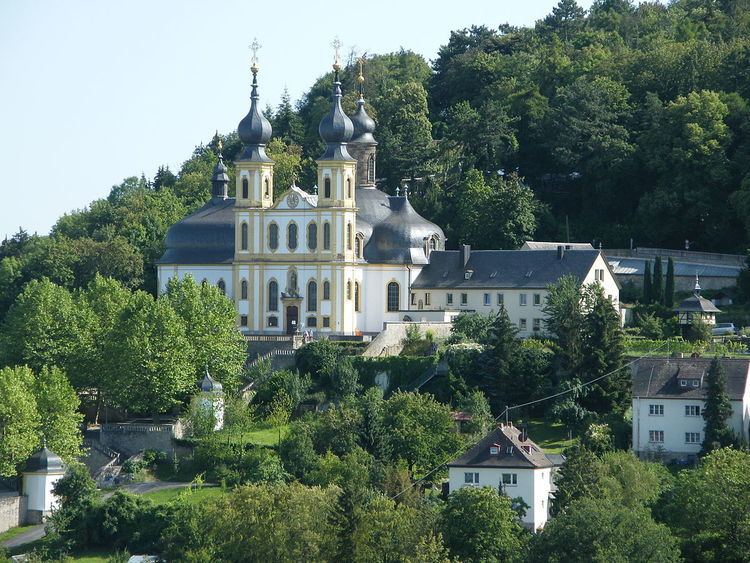State Germany Year consecrated 1754 Province Bavaria | Affiliation Roman Catholic Region Franconia Phone +49 931 79407760 Municipality Würzburg Groundbreaking 1748 | |
 | ||
Completed 1750 (structures),1821 (interior furnishings) Address Spittelbergweg 21, 97082 Würzburg, Germany Similar Marienberg Fortress, Würzburg Residence, Marienkapelle, Alte Mainbrücke, Würzburg Cathedral | ||
Meeviertel k ppele und kreuzweg
Käppele is the commonly used (colloquial) name for the church Wallfahrtskirche Mariä Heimsuchung (named for the Visitation of Mary) in Würzburg, Bavaria, Germany. It was built following plans by Balthasar Neumann in the mid-18th century in Rococo style. It serves as a pilgrimage church and until 2014 was attended to by members of the Capuchins.
Contents
- Meeviertel k ppele und kreuzweg
- W rzburg k ppele 16 07 16 prof
- Geography
- History
- Architecture
- Today
- References
W rzburg k ppele 16 07 16 prof
Geography
The church is located on the north-eastern slope of the 366 metre Nikolausberg, below the Frankenwarte and above the left bank of the Main in the city of Würzburg, the capital of Lower Franconia in Bavaria, Germany.
History
The name Käppele is derived from the German word Kapelle (chapel). Originally, a local fisher erected a pietà in what was then a vineyard in 1640. About ten years later, four miracle cures were reported in connection with the statue. Around 1650, a first chapel was built around the pietà. Together with some other reported phenomena, the cures began to attract pilgrims to the site, especially around pentecost. In 1690 and 1713, the original chapel was increased in size. Balthasar Neumann, architect of the UNESCO World Heritage Site Würzburg Residence, then drew up plans for a new church which incorporated the older chapel as the Alte Gnadenkapelle. The foundation stone was laid on 5 April 1748. Construction took until 1750 but the interior furnishings were not finished until 1821. The new chapel was officially inaugurated only on 21 September 1824, due to earlier disruptions caused by securalization of 1803. However, the capuchins already began holding services in 1754.
Architecture
A way of the cross with 14 stations of the cross marked by small chapels leads up to the Käppele. These were based on an idea by Neumann, but completed only in 1799. The live-sized statue groups (77 figures) were created by Simon and Peter Wagner.
The church's double-towered front and the roof with its cupolas and roof lanterns give it an unusual appearance that distinguishes it from the other churches of Würzburg. The interior features ceiling frescos by Matthäus Günther from 1752 and 1781 and stucco work by Johann Michael Feuchtmayer the Elder. The side altars date to 1768. The neoclassical high altar was made in 1799.
The organ dates to 1752, made by Christian Köhler from Frankfurt (renovated in 1991).
Votive offerings in the Mirakelgang reflect local devoutness and tastes of the 19th and 20th centuries.
Today
Apart from being a tourist attraction, the Käppele remains a popular pilgrimage site, especially at pentecost.
The Käppele is administered by the Kirchenstiftung Käppele. The attached monastery and the garden are property of the Capuchins, but they are trying to sell them to the Diocese of Würzburg. In October 2014, the Capuchins left the Käppele. It is now cared for by a rector.
As of October 2014, a renovation of the interior in two stages was planned within the next two years.
